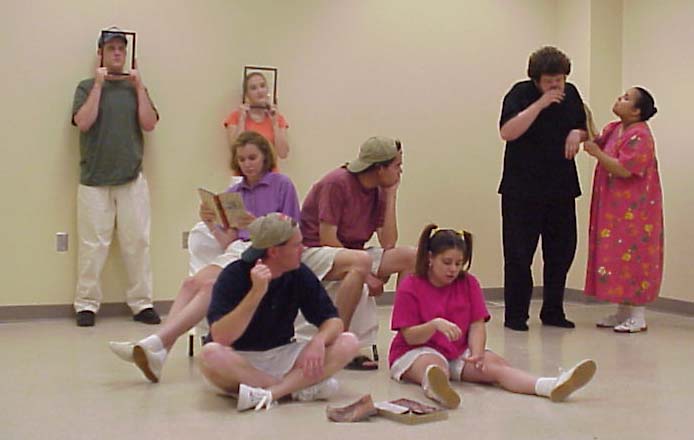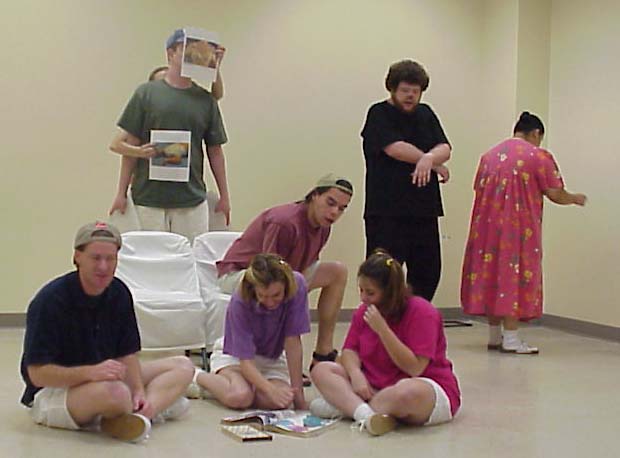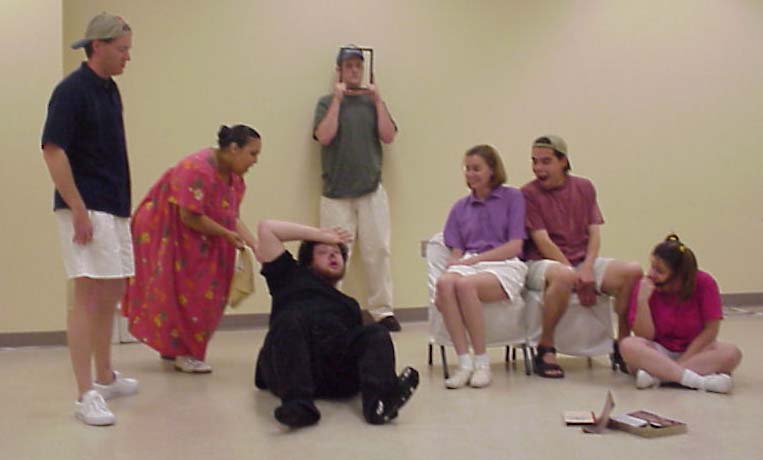

A
Reader's Theatre adaptation of a short story
from Rebecca Wells' Little Altars Everywhere
I n her introduction to Little
Altars Everywhere, Rebecca Wells writes that
this collection
of stories
was about "hidden blessings in suffering." In conceptualizing this
adaptation of "Cruelty to Animals," a short story from that
collection, I have pondered this statement deeply. Both the
"blessings" and "suffering" in "Cruelty to
Animals" come to the reader disguised in a cloak of grotesque
comedy.
Through the ironic attitude of Little Shep, the narrator seems to call
into
question the ultimate meaningfulness of both "suffering" and
"blessing."
n her introduction to Little
Altars Everywhere, Rebecca Wells writes that
this collection
of stories
was about "hidden blessings in suffering." In conceptualizing this
adaptation of "Cruelty to Animals," a short story from that
collection, I have pondered this statement deeply. Both the
"blessings" and "suffering" in "Cruelty to
Animals" come to the reader disguised in a cloak of grotesque
comedy.
Through the ironic attitude of Little Shep, the narrator seems to call
into
question the ultimate meaningfulness of both "suffering" and
"blessing."
In my adaptation of
"Cruelty to Animals" I have used the
Readers Theatre convention
of having a narrator who both tells
his story and participates in a
re-enacting of the events described. It is
my intent that the use of an epic mode of
presentation will create a distancing effect for the audience and
provoke a
critical, Brechtian consideration of the values presented rather than
encouraging
emotional involvement with the characters' predicaments.
I have used the
Readers Theatre convention
of having a narrator who both tells
his story and participates in a
re-enacting of the events described. It is
my intent that the use of an epic mode of
presentation will create a distancing effect for the audience and
provoke a
critical, Brechtian consideration of the values presented rather than
encouraging
emotional involvement with the characters' predicaments.
In addition, I utilize
several other adamantly non-realistic staging techniques to heighten
this sense
that events are taking place in an unreal, "cartoon" world.
Costumes are in bright, primary colors. Characters play
pictures on the
wall, a television set, and dolls who swap heads. At several
points, I
have characters freeze in tableaux reminiscent of religious
paintings.
Miss Peppy is not portrayed as a dog, but as an anthropomorphized
figure as
separated from the behavior of a real canine as Mickey Mouse is from
that of a
real rodent.
I hope that my utilization of these staging choices will heighten the audience's awareness that they are witnessing not reality, but a metaphor for reality. From this perspective I hope my auditors will be ableto look past the pathos and humor of the piece and sense the underlying commentary.
Home | Notes | Cast | Exerpts | Photos



